>>Return to CareNet Information
April 17 is designated “World Hemophilia Day.”
World Hemophilia Day was established by the World Federation of Hemophilia (WFH) in 1989 for patient organizations worldwide to raise awareness and the understanding of hemophilia and other bleeding disorders. This year’s theme is “equitable access for all: recognizing all bleeding disorders.”
Hemophilia is an incurable disease, wherein the blood clotting factors that cease bleeding are genetically deficient or deficient due to other reasons. Therefore, once bleeding starts due to an injury or bruise, it takes a long time for it to stop.
In Japan, approximately 6,000 patients with hemophilia receive treatment at 1,000 medical institutions. The Japanese Society of Thrombosis and Hemostasis established the Hemophilia Treatment Coordination Committee in January 2018 to enable patients to continue receiving treatment at facilities near their residences and access the latest individualized and comprehensive medical care. It is working to build a hemophilia medical care collaboration system.
CareNet and Macromil CareNet conducted a survey targeting 94 physicians (56 in pediatrics and 38 in hematology), who are involved in the treatment of hemophilia among CareNet members. The survey revealed the following points:
<Survey period> 2024/1/26-2/2
・73% of the physicians decided on a treatment plan based on their own diagnosis of hemophilia; 70% of the physicians at other hospitals decided on the treatment plan themselves.
・Regarding issues other than therapeutic drugs, the most common response was, “Inadequate number of specialists at other hospitals in the area” (32%), followed by “Inadequate number of specialists in the hospital” (27%) and “Few facilities that can be referred for daily care,” “Insufficient information regarding hemophilia treatment status at affiliated facilities” (26%).
・Information about hemophilia is being collected through multiple channels; the top channels were identified as, “medical information websites”(53%), “academic conferences/research groups”(45%), and “pharmaceutical company representatives”(43%). Regarding the information obtained, “treatment methods” was the highest at 51%, followed by drug information, such as “information on drug efficacy and safety” (46%) and “information on new drugs and drugs under development” (43%). Only approximately 10% of respondents possessed information on medical care coordination, which was cited as an issue.
・In addition to “drugs and treatment methods,” the information that physicians want pharmaceutical companies to provide in the future includes “information about local hemophilia treatment facilities” and “track record and know-how on collaboration between facilities.” Approximately 20% of the physicians responded with information on medical care collaboration.
・Providing information on “medical cooperation” in addition to “drugs and treatment methods” is believed to enable provision of information that is currently unavailable and supports the resolution of current issues.
Of the responding physicians, 29% worked at a center hospital (a “block base facility” or a “regional core hospital”), with a high proportion of physicians in both, pediatrics and hematology, working outside the center hospital.
[Table 1]
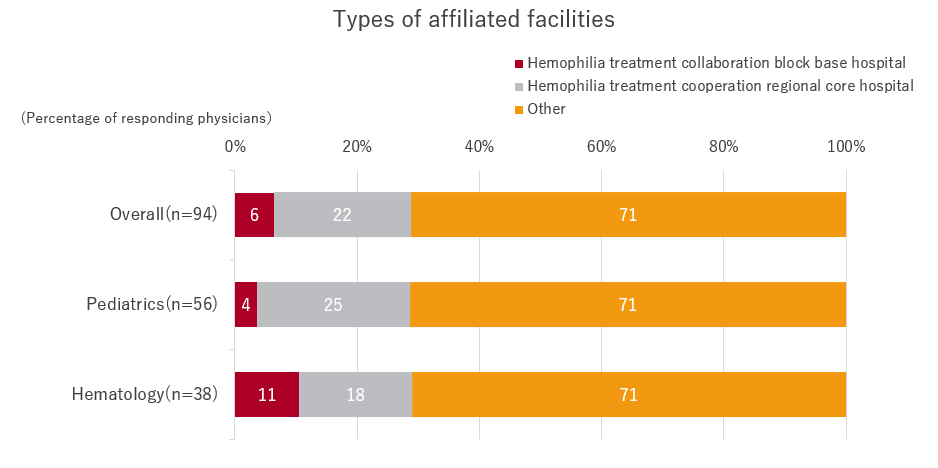
When asked, “Please tell us about your own involvement in hemophilia treatment,” 73% answered “making the diagnosis myself and, accordingly, deciding on the treatment plan,” while 21% answered “Treating on the basis of the diagnosis and treatment plan of another physician.”
About 87% of hematology physicians and 65% of pediatric physicians decided on their own treatment plans. The proportion of physicians collaborating with each other was higher in the pediatric, than in the hematology, group.
About 70% of the physicians outside the center hospital decided on their own diagnosis and treatment plans. It is necessary to provide a wide range of drug information not only to physicians at the center hospital, but also to all physicians treating hemophilia.
[Table 2]
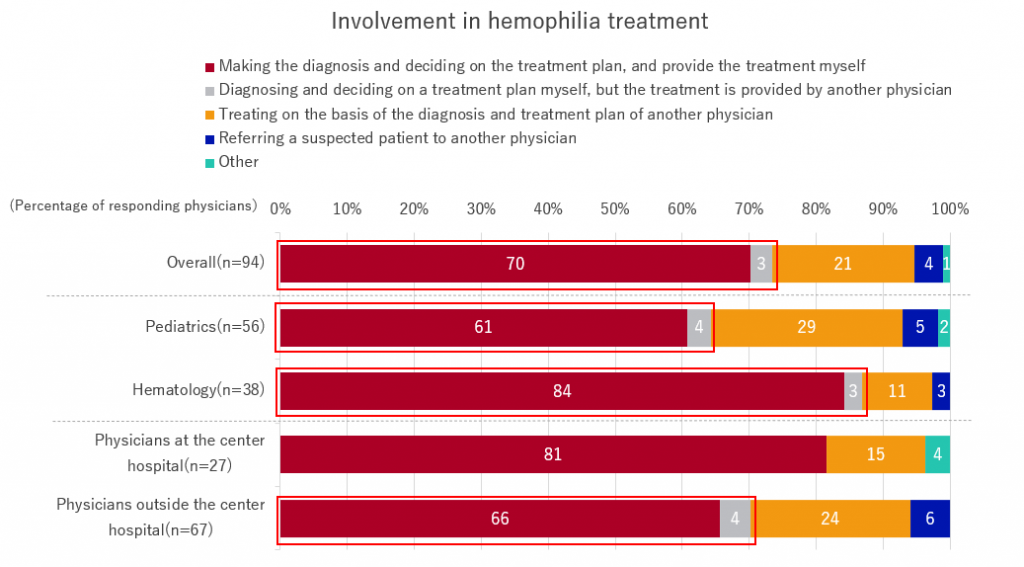
When asked about their awareness and usage of hemophilia-related drugs released in the past five years, most physicians were aware of Hemlibra. The awareness of other drugs ranged from 60% to 80%, regardless of the release date, with Ortuvio and Aremo accounting for 71% and 57%, respectively (both released in November 2023).
The level of awareness varies among physicians, with lower awareness among those working in pediatric and non-central hospitals. Even among physicians who decide their own treatment plans, it is assumed that there are cases wherein they do not have access to information about new drugs.
[Table 3]
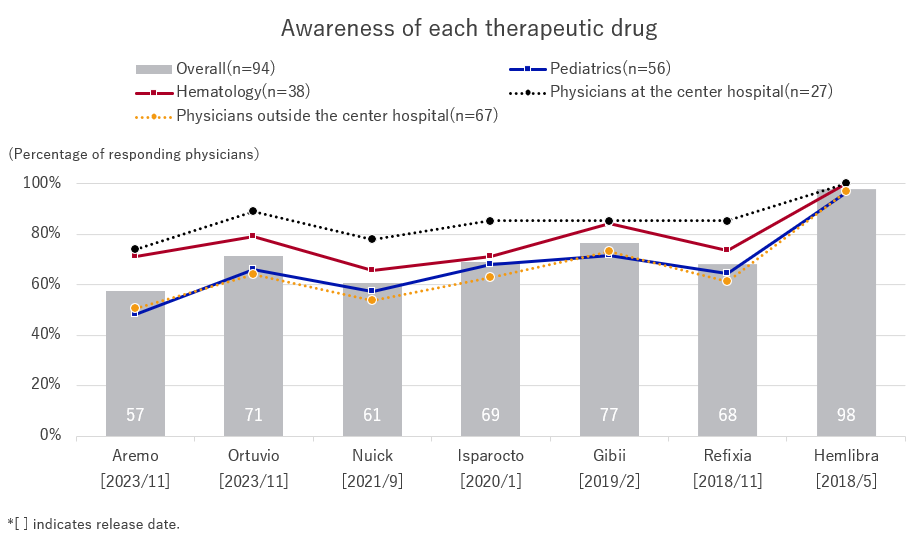
In response to the question, “Please tell us what you feel is an issue in the treatment of hemophilia other than therapeutic drugs,” the most common response was “Inadequate number of specialists at other hospitals in the area” (32%). This was followed by, “Few specialists in the hospital” (27%), “Few facilities to which patients can be referred for daily care,” and “Insufficient information regarding the status of hemophilia treatment at affiliated facilities” (26%).
The greatest challenge in coordinating medical care for patients with hemophilia in the community is the scarcity of specialists. Additionally, there are few affiliated facilities for daily care after the treatment plan is decided, and even if there are, there is little information about them, resulting in a high percentage of physicians deciding both, the diagnosis and treatment plans.
[Table 4]
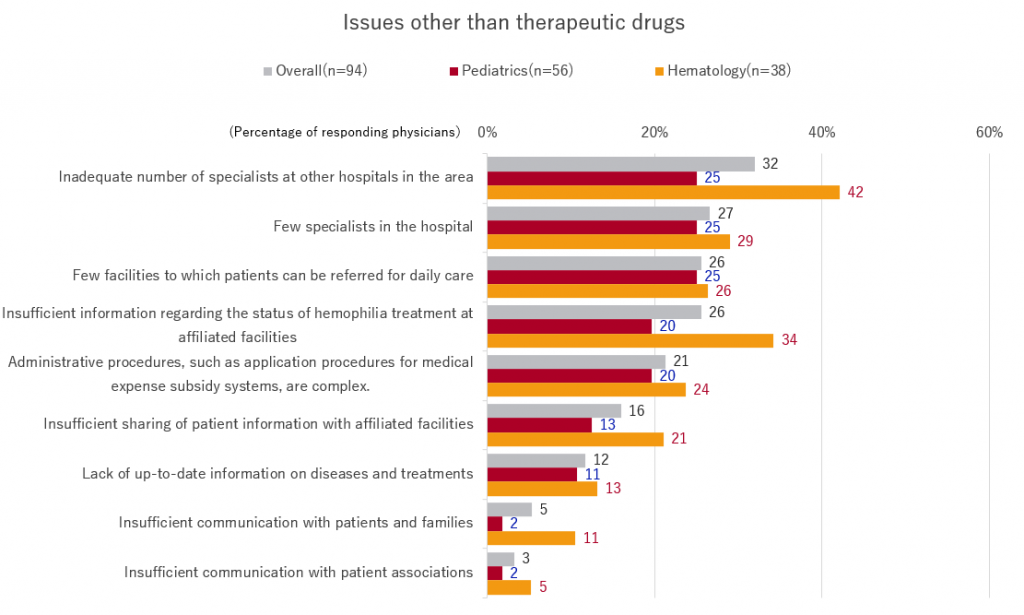
When asked “Which information channels do you particularly use to obtain information about hemophilia?,” both pediatrics and hematology departments answered, “Medical information websites”(53%), “Academic conferences and research groups”(45%) and “MRs of pharmaceutical companies” (43%), indicating that information is collected through multiple channels.
At center hospitals, “MRs of pharmaceutical companies” (52%) accounted for the maximum responses, indicating that MRs contribute to providing the latest information.
[Table 5]
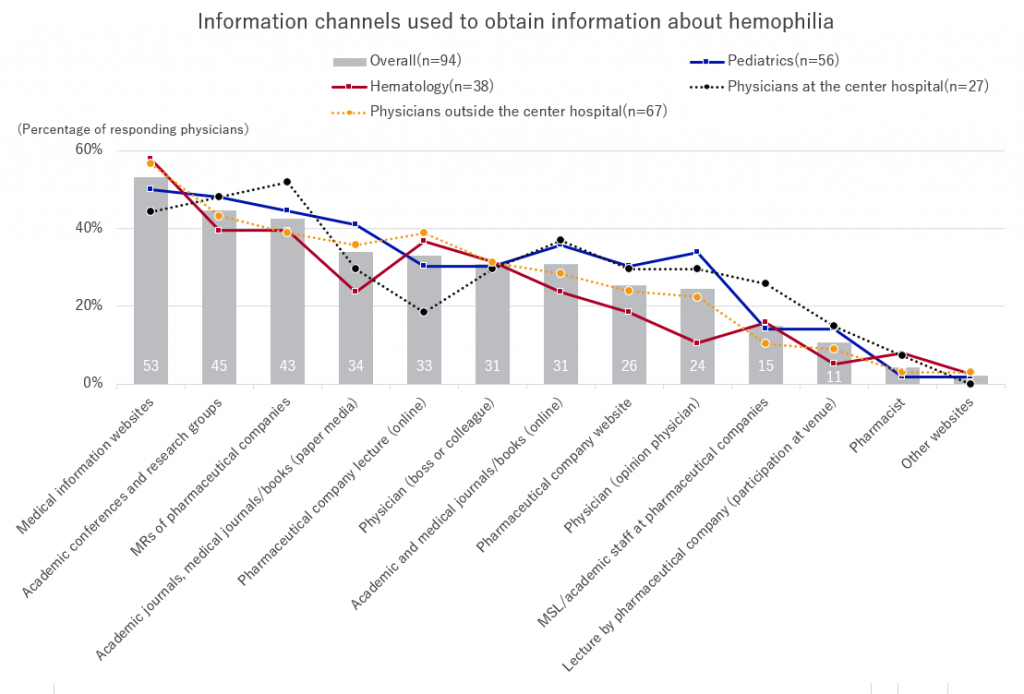
When asked, “Please tell us what information you usually receive regarding hemophilia,” the highest response rate was for “treatment methods” (51%). Drug information, including “information on drug efficacy and safety,” (46%) was next, followed by, “information on new drugs and drugs under development” (43%).
Regarding information other than treatment prescriptions and drugs, more than 20% of hematology physicians answered, “the opinion of the physician” or “the view of the patient/family,” indicating that reputation is also used as a reference for medical treatment.
On the other hand, only about 10% of physicians obtain information on “medical care coordination,” which has been raised as an issue, suggesting that they are not able to obtain information from the above-mentioned channels.
[Table 6]
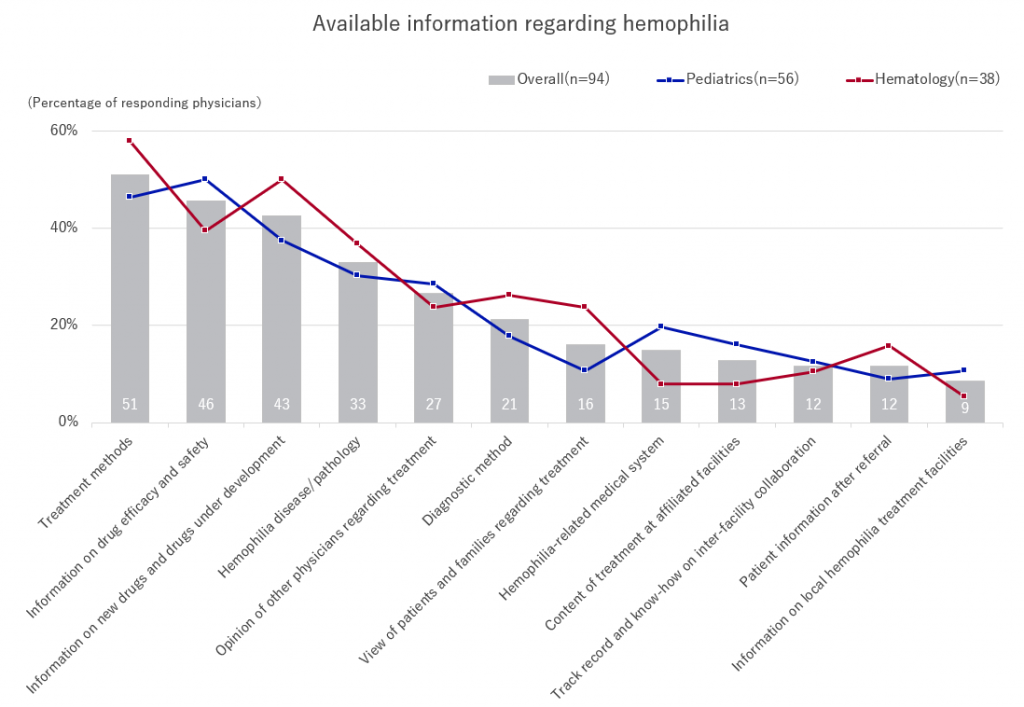
When asked, “What kind of information would you like pharmaceutical companies to provide in the field of hemophilia?,” responses included “information on drug efficacy and safety” (38%), “information on new drugs and drugs under development”(36%), and “treatment methods”(34%); regarding information received currently, many cited information about drugs and treatment methods.
Approximately 20% of physicians responded that, in contrast to the information currently received, they require information regarding medical care collaboration, such as “information on local hemophilia treatment facilities” and “track record and know-how on inter-facility collaboration.”
Providing information on “medical cooperation,” in addition to “drugs and treatment methods,” is believed to result in the provision of information that is currently unavailable and facilitate resolution to current problems.
[Table 7]
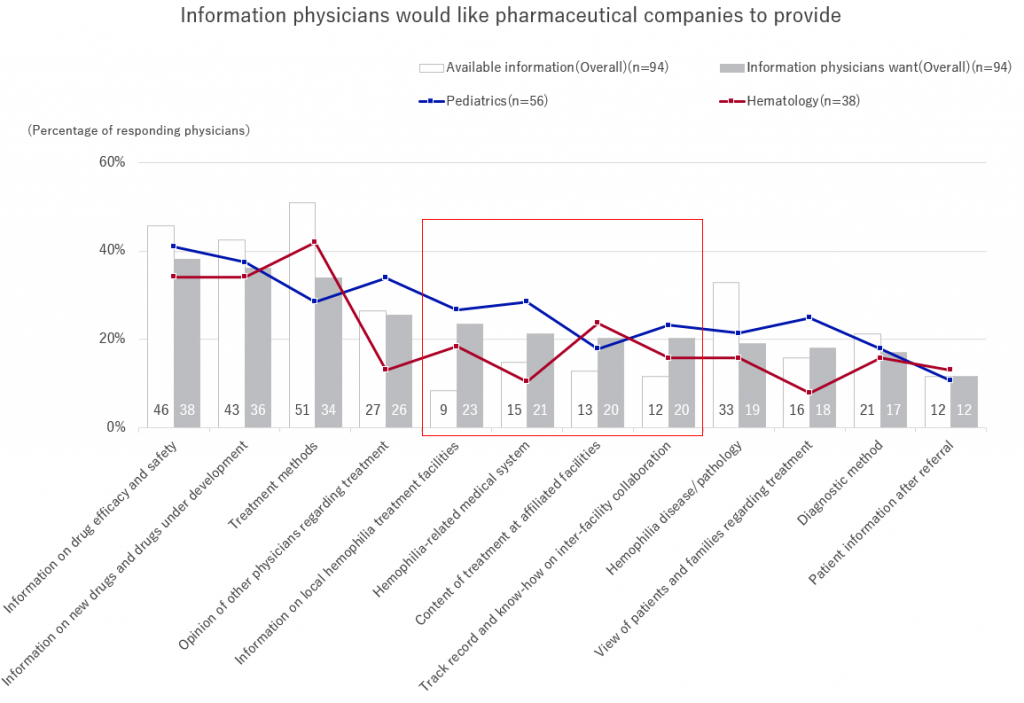
>>Return to CareNet Information


Comments are closed